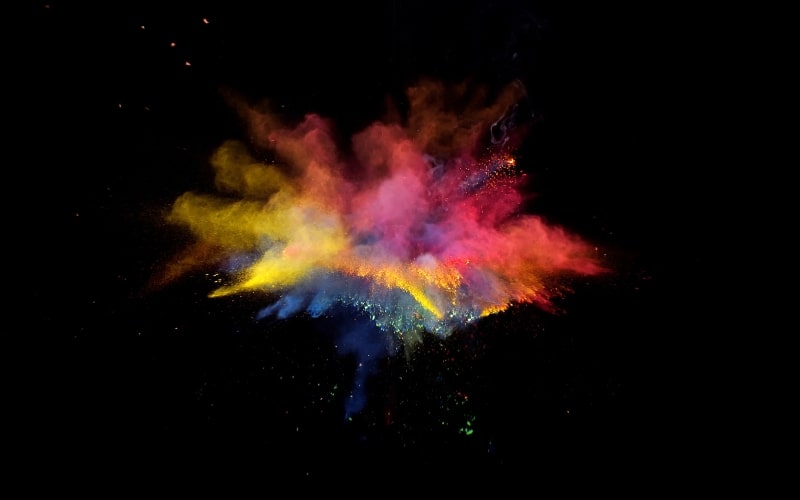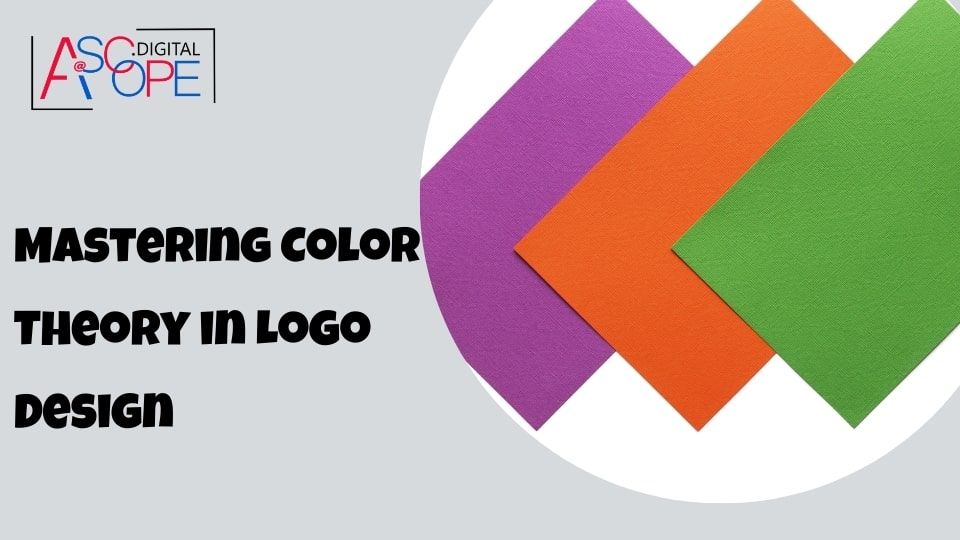Color is one of the most powerful tools in a designer’s arsenal. It has the ability to evoke emotions, convey messages, and create a memorable identity for brands. In the realm of logo design, mastering color theory is crucial for creating impactful and effective logos. This blog will delve into the principles of color theory, its application in logo design, and tips for choosing the right colors for your logo.
The Basics of Color Theory
Color theory is a framework that guides the use of color in design. It encompasses the color wheel, color harmony, and the context in which colors are used. The color wheel, developed by Sir Isaac Newton in 1666, organizes colors in a circular format, showing the relationship between primary, secondary, and tertiary colors.
Primary, Secondary, and Tertiary Colors
Primary colors are red, blue, and yellow. These colors cannot be created by mixing other colors and serve as the foundation for creating all other colors. Secondary colors are green, orange, and purple, created by mixing primary colors. Tertiary colors are formed by mixing a primary color with a neighboring secondary color on the color wheel, resulting in hues like red-orange and blue-green.
Color Harmony
Color harmony refers to the aesthetically pleasing arrangement of colors. Harmonious color combinations create a sense of order and balance, which is essential in logo design. There are several methods to achieve color harmony:
- Analogous Colors: These are colors that are next to each other on the color wheel. They create a serene and comfortable design. For example, blue, blue-green, and green.
- Complementary Colors: These are colors opposite each other on the color wheel. They create a vibrant look and can make elements stand out. For example, red and green.
- Triadic Colors: These are three colors evenly spaced around the color wheel. They offer a balanced yet vibrant color palette. For example, red, yellow, and blue.
- Split-Complementary Colors: This involves a base color and two colors adjacent to its complementary color. It offers high contrast with less tension. For example, blue, yellow-orange, and red-orange.
The Psychological Impact of Colors

Colors have psychological impacts that can influence how a logo is perceived. Understanding these effects can help in choosing colors that align with the brand’s message and values.
- Red: Represents energy, passion, and urgency. It’s often used in logos to grab attention and evoke strong emotions.
- Blue: Conveys trust, stability, and professionalism. It’s commonly used in corporate logos to instill a sense of security and reliability.
- Yellow: Symbolizes happiness, optimism, and warmth. It’s used to create a cheerful and energetic vibe.
- Green: Denotes growth, health, and tranquility. It’s frequently associated with nature and environmental brands.
- Purple: Evokes luxury, creativity, and wisdom. It’s often used in logos to create a sense of elegance and sophistication.
- Orange: Combines the energy of red and the happiness of yellow. It’s used to convey enthusiasm, creativity, and friendliness.
- Black: Represents power, elegance, and sophistication. It’s used in logos for its boldness and timeless appeal.
- White: Signifies purity, simplicity, and cleanliness. It’s used to create a minimalist and modern look.
Applying Color Theory to Logo Design
When designing a logo, color choice should be intentional and strategic. Here are some key considerations for applying color theory in logo design:
- Brand Identity: The colors chosen should reflect the brand’s personality, values, and message. For instance, a healthcare brand might use blue to convey trust and professionalism.
- Target Audience: Understanding the preferences and cultural associations of the target audience can guide color choices. For example, colors have different meanings in different cultures.
- Versatility: A logo should be versatile and work well in various contexts. Consider how the logo looks in black and white, grayscale, and on different backgrounds.
- Contrast and Legibility: Ensure there is enough contrast between colors for readability and visual impact. This is crucial for text elements in a logo.
- Color Combinations: Use harmonious color combinations to create a balanced and cohesive look. Avoid using too many colors, as it can make the logo appear cluttered.
Case Studies of Effective Logo Colors
Examining successful logos can provide insights into effective color use:
- Coca-Cola: The iconic red color of Coca-Cola’s logo evokes excitement and energy, aligning with its brand personality.
- Facebook: The blue color of Facebook’s logo conveys trust and reliability, essential for a social media platform.
- Starbucks: The green color of Starbucks’ logo represents growth and freshness, reflecting its commitment to environmental sustainability.
- FedEx: The purple and orange colors in FedEx’s logo signify creativity and efficiency, aligning with its brand values.
Tips for Choosing Colors in Logo Design

Choosing the right colors for a logo requires careful consideration and experimentation. Here are some tips to help in the selection process:
- Start with Black and White: Design the logo in black and white first. This ensures that the logo is strong and recognizable without relying on color.
- Research Competitors: Analyze the color schemes used by competitors to identify trends and differentiate your logo.
- Use Color Psychology: Consider the psychological impact of colors and how they align with the brand’s message.
- Test in Various Contexts: Test the logo in different sizes, backgrounds, and mediums to ensure versatility.
- Get Feedback: Gather feedback from stakeholders and target audience to refine color choices.
Tools for Choosing Colors
Several tools can assist in choosing and experimenting with colors for logo design:
- Adobe Color: An online tool that helps create and experiment with color schemes.
- Coolors: A color scheme generator that allows easy creation and customization of color palettes.
- Color Hunt: A curated collection of beautiful color palettes for inspiration.
- Paletton: A tool for creating color schemes based on color theory principles.
Common Mistakes to Avoid
Avoiding common mistakes can enhance the effectiveness of a logo:
- Overcomplicating the Color Scheme: Using too many colors can make a logo look cluttered and confusing.
- Ignoring Cultural Differences: Colors have different meanings in different cultures. It’s important to consider these associations, especially for global brands.
- Lack of Contrast: Insufficient contrast can affect the legibility and impact of the logo.
- Following Trends Blindly: While it’s good to be aware of trends, blindly following them can result in a logo that quickly becomes outdated.
- Neglecting Versatility: Ensure the logo works well in various contexts, including monochrome and different background colors.
The Role of Gradients and Shades
Gradients and shades can add depth and dimension to a logo, making it more visually appealing. However, they should be used sparingly and strategically:
- Subtle Gradients: Use subtle gradients to add interest without overwhelming the design.
- Shades for Depth: Incorporate shades to create a sense of depth and sophistication.
- Consistency: Ensure that gradients and shades are consistent with the overall brand aesthetic.
The Evolution of Logo Colors
Logo colors can evolve over time to stay relevant and fresh. Many brands have updated their logo colors to reflect changes in their identity or to modernize their look:
- Google: Google’s logo has evolved from a complex design to a simple, colorful wordmark, reflecting its growth and innovation.
- Apple: Apple’s logo transitioned from a rainbow-colored apple to a sleek, monochromatic design, aligning with its minimalist aesthetic.
- Pepsi: Pepsi’s logo has undergone several color changes, each representing a new era in its brand history.
Practical Applications of Color Theory in Logo Design
To see how color theory directly impacts your brand, consider the practical applications of these principles in logo design. A well-chosen color palette can communicate your brand’s values and message effectively. For instance, using blue can evoke trust and dependability, while red can inspire passion and energy. By strategically selecting colors that align with your brand’s identity, you not only create a visually appealing logo but also foster an emotional connection with your audience.
Moreover, the right color choices can enhance brand recall and recognition, making your business more memorable to consumers. Consistency in color usage across your marketing materials, including your logo, website, and promotional content, strengthens your brand’s visual identity. Thus, improving traffic and sales for your website. Read more on the other reasons why your website isn’t getting traffic. By understanding and applying these color theory principles, you can create a powerful and effective logo that stands out in a crowded marketplace
Conclusion
Mastering color theory is essential for creating effective and memorable logos. By understanding the principles of color harmony, the psychological impact of colors, and the practical considerations in logo design, designers can craft logos that resonate with audiences and stand the test of time. Remember to experiment, gather feedback, and stay true to the brand’s identity to create a logo that truly stands out


